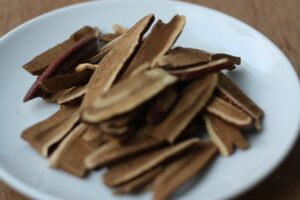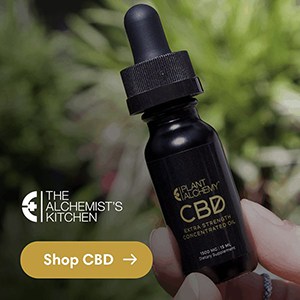My relationship with my best friend has ebbed and flowed over the seven-plus years we’ve known each other. From work-wives, to neighbors who met for sanity-boosting park walks during quarantine, we’ve played various roles for each other. Our amount of contact has shifted as our schedules, commitments and lifestyles have evolved. But what connects us still is that uncanny ability to know when we really need each other.
After a particularly trying work fiasco that sent me into poorly held-back tears, she left flowers on my desk the next day to remind me I’m loved; I’ve baked loaves of bread that saved her from a trip to the store after she returned from a cross-country drive. When we decided to do a homemade Christmas gift exchange, we made each other almost the same things (knitwear and cookies, naturally); and when loss and grief knocked on our separate doors, we were the next ones to ring the bell to offer the comfort that no one else could.
Whether or not you have a person who serves a similar role in your life—the one who always has your back, no matter what the problem is—we can all rely on nature, our best and forever friend, for that special kind of support: specifically, through plants known as adaptogens. Having gained a lot of attention in the health and wellness world in the last few years, adaptogens are likely on your radar already. And they’re totally worthy of their trending status, especially in our increasingly difficult and overwhelming world.
That’s because adaptogens, like my best friend, support stress in a non-specific way. Adaptogens will identify the imbalance—from injury, stress, or anything in between—and swoop in with the right kind of healing, no questions asked. . As renowned herbalist David Hoffmann describes in Medical Herbalism, adaptogens have a “normalizing” effect on the body that does “not influence normal body functions more than required” (483). They “smooth out” the stress response—which you may know as fight, flight, or freeze—rather than prevent it, such that our highs and lows feel more manageable and are less taxing on our nervous system and metabolism.
Science still doesn’t fully understand how adaptogens do their thing, but to me that’s all the more reason to love them. Not knowing preserves a kind of mystery, and dare I say magic, to our human bodies’ relationship to nature I sometimes fear that too much logic would dispel.

Adaptogens and Ayurveda
In Ayurveda, we turn to adaptogens for a variety of imbalances, given their truly multi-purpose nature. Most often, though, imbalances regarding stress have their root in the vata dosha, which comprises air and ether. This mobile, expansive, and unrooted dosha is responsible for all the movements of the body—from ambulation to peristalsis to the transportation of information through our nervous system. Vata has a big job to do. In a culture where stimuli are coming at us from all directions most of our waking (and sometimes even sleeping!) hours, it’s only natural that vata starts to get overwhelmed.
Ayurveda sees imbalances as an excess of certain qualities, elements, and/or doshas, so it’s when we’re dealing with a lot of moving, unpredictable elements (which could characterize the time of COVID quite well) on top of the physical and mental movements we need to maintain homeostasis, we have a recipe for a vata imbalance. You might feel this even more acutely if you have vata in your constitution, or during the fall season, when the cold, dry environment increases vata in the world around you.
This two-way relationship between our inner world and outer world is indeed a central tenet to Ayurvedic philosophy. Because Ayurveda sees the whole universe as made of the same matter—the five elements, in various amounts and expressions—we can view our existence as individual beings as “microcosms of the macrocosm.” In other words, what happens inside us is also happening, on a larger scale, outside us, and vice versa. When vata rises in nature, vata rises in us.
When we feel scattered and distracted internally, our homes and routines start to look like a tornado swept through them. Our I-centric society, where we’ve tried to master or dissociate from nature in various ways throughout history, has largely forgotten that symbiosis. But since we’re wired to be in sync with our macrocosm, through our circadian rhythm, it’s actually not that hard to remember that the universe has your back—if you’re willing to surrender to it.
Balancing Stress with Stability
Adaptogens are one of the many ways we can see the microcosm-macrocosm conversation in real time. As much as nature’s rhythms have the potential to throw us off through an excess of dosha—more vata in fall makes more vata in us—nature simultaneously provides the opposite qualities, largely through foods, to help us come back into balance.
In fall, for instance, the weather might be blustery and brisk, but the earth offers sources of nourishment with the opposite qualities—root vegetables, nuts and legumes, grains and wheat, not to mention a craving for sweet and cozy spices like cinnamon, nutmeg, and cloves, and soft textures to make a barrier around the skin. All of these sensory foods are heavy, dense, and building, to stabilize unrooted vata (another self-evident Ayurvedic motto is “like increases like, and opposites balance”).
While the chemistry of adaptogens isn’t yet identified, what we can see in most of this category of plant is this opposites-balance concept. Namely, many adaptogens are actual roots (or, the parts we use in medicine are the roots of the plant). With this innate groundedness, along with a somewhat sweet taste that Ayurveda turns to whenever more cohesion is needed in the system, adaptogenic plants will smooth out the erraticness of vata in mind and body.
The microcosm-macrocosm paradigm also applies to the two-way approach of using adaptogens to support stress. First, regular adaptogens can be consumed in a preventive way, which Hoffmann describes “causes a normalization of stress hormone levels and a generally decreased predisposition to stress” (483).
On the other hand, if you find yourself in acute stress and haven’t been able to microdose on calm leading up to it, adaptogens also come to the rescue by directly and indirectly regulating the immune system and improving cognition. This might sound a bit like the stress response itself but remember that adaptogens are like Goldilocks; they work in just the right amount and in just the right way. So rather than jolting you awake like an espresso-shot spike of adrenaline, adaptogens are like the sunrise: gently waking you up with gradual stimulation and brightness, so you can greet the world with your full self, and see clearly, without panic, what’s ahead.
3 Common Adaptogens and How to Use Them
As they grow in popularity, adaptogens have become widely available in many health food and grocery stores. Most often, they’re in the form of powder, tincture, or tablets, each of which has its pros and cons. Powders are the most “whole food” way of delivering the plant into your system, which Ayurveda prioritizes because it allows you to experience the taste of the plant, which is part of its medicinal properties. Ashwagandha, for instance, is quite bitter in taste, and thus offers a rather immediate dropping out from the swirl of an anxious mind, after which its warming and grounding properties settle in.
Because these plants are naturally heavy, however, tinctures are a good option for those with weak or compromised digestion. Tinctures are generally more potent than powders, but won’t let you taste as much of the herb, especially if it is an alcohol base; that fermentation, however, can make it more digestible and increase its warming qualities, which balances vata, too.
Tablets are the most convenient of them all, and if taking adaptogens as a pill means you will take them, then do it! What you’ll be missing is the taste element of the medicine, so when possible choose a compressed pill rather than one in a capsule.
As always, you’ll want to make sure you’re mindful of the dose and frequency of your intake, which will depend on the herb and your specific needs. Consult a practitioner for more guidance, especially if you are taking other medications. Avoid herbal supplements if you are pregnant.
Here are three adaptogens that I find work well for most people, are commonly available (Anima Mundi is an excellent source), and—best of all—incorporate well into drinks and foods, which always enhances digestibility especially if taken long-term. As a general rule, you should give yourself a break from any herbs after 3 months of use, or as directed by your practitioner, so that you do not become acclimated to its effects.
- Ashwagandha (withania somnifera)—a revered Ayurvedic herb that is known for supporting the reproductive system, especially for men, though anyone can take it safely. Bitter and warming, ashwagandha has a kick to it—its Sanskrit name means “the smell of a horse,” referring to its odor and the virility it confers—and is excellent for all kinds of depletion. Cook ½ teaspoon in warm milk with a pinch of cinnamon, cardamom, or ginger, and honey (which help deliver the herb to the tissues) as a tonic in the morning to increase stamina, or at night to promote sleep.
- Reishi (ganoderma lucidum)—known as the “mushroom of immortality” in Chinese Medicine, reishi grows (not specifically as a root, but mushrooms are about as earthy as they come!) in a variety of climates but sparsely so; perhaps a clue as to how to use it, in small but potent doses! It supports the immune system, nervous system, cardiovascular system, endocrine system, and many others through the “normalizing” function of all adaptogens. And while this might make it seem generic, reishi’s special power is its ability to uplift and calm the spirit. I find I literally “breathe easier” after a sip or bite of something powered by reishi. To me, the umami flavor of reishi is reminiscent of chocolate (no wonder it supports the spirit!), so I mix in ½ teaspoon of powder into my cacao beverages, or add it to chamomile tea for a delicious nighttime brew. I love to use it in broths when making soup that needs an extra dose of healing.
- Mucuna pruriens—also known as “velvet bean” and a natural source of L-dopa, the amino acid that converts into dopamine in the brain. As it literally makes the chemicals for happiness, mucuna can be a friend when you’re feeling stuck in a rut or generally down about life, or experiencing other symptoms of sluggishness, fatigue, body aches, and brain fog. Neutral to sweet in flavor, mucuna makes a great add-in to granolas or warm breakfast cereals.

Be Your Own Adaptogen
Knowing a friend—human or plant—will come to your side when you need is a valuable reassurance; as we’re realizing more and more, there is great healing and power in community, and we are truly stronger when we work together. Even nature teaches us this, as we learn more about the complex and intricate symbiosis of trees and fungal networks.
But being able to support your own resilience through self-awareness in the face of stress, to smooth out the highs and lows of life, is an invaluable skill. Not only does it improve quality of life by helping you identify stressors and their symptoms in you, but I find practices that encourage self-awareness will help me choose more mindfully when I need adaptogenic support and for how long. Through yoga, meditation, and other mindfulness practices, we can learn to observe the movements of the mind (or of the world—remember microcosm/macrocosm) in a nonjudgmental way, such that they rise and fall through our consciousness without drama, fixation, or obsessive storytelling. In that way, you become your own adaptogen.
If adaptogens are nonspecific in their support, we can have a similar superpower by gathering a variety of stress-reducing tools to meet specific scenarios. Maybe you’ve been battling writer’s block for hours, and choose to go for a walk to bring flow to the body and down from the mind. Maybe you feel a panic or anxiety attack coming on, and turn to gentle pranayama to regulate your breathing. Or maybe you look at your calendar and see a day of back-to-back appointments, so choose to spend five minutes with a soothing tea ritual before you head off to tackle the world.
No matter where or how we cultivate calm and steadiness, keep in mind how this ability to self-regulate ripples inwardly and outwardly. Not only does a more balanced, happy you lead to long-term health in body, mind, and spirit, but that energy exudes from your being wherever you go. As a beacon of harmony, you can help change the vibrations of the microcosm and the macrocosm whenever you choose to pause and meet the challenges of the present with the nurturing, loving gesture of your best friend.







